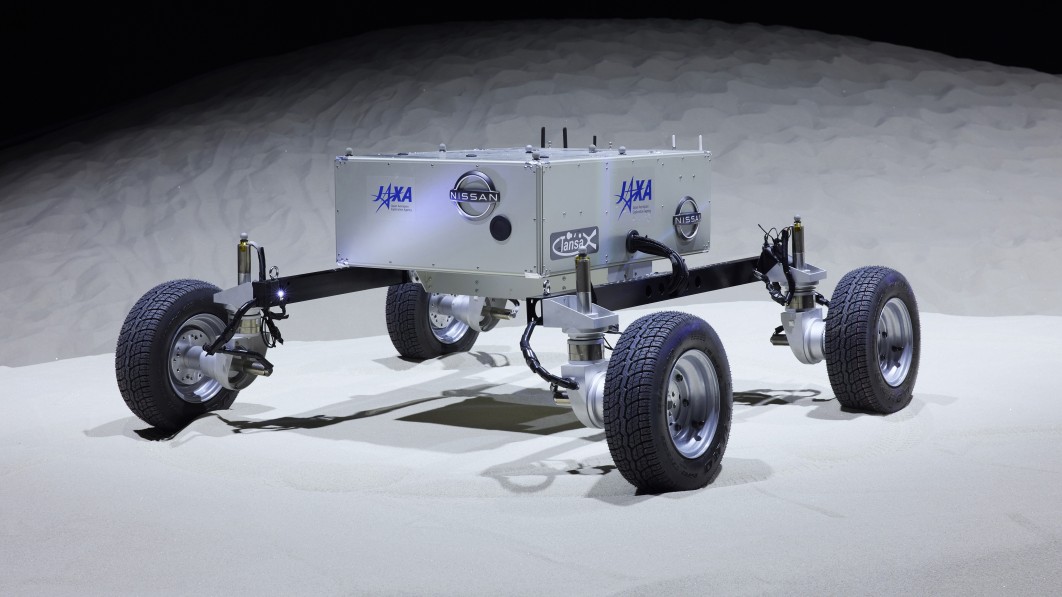Say hello to the prototype Nissan Lunar Rover. Developed in collaboration with the Japan Aerospace Exploration Agency, this rover is the culmination of nearly two years of work. It may look like a simple box on a frame with four wheels attached to it, but this simple box on a frame is designed to function in places like the moon.
Nissan’s contribution to the project is the implementation of the company’s e-4ORCE four-wheel steering technology. We tested this technology on a Nissan vehicle a few years ago, and now those lessons are applied to better enable a lunar rover to traverse a planet’s surface. The main focus has been on improving performance in sandy conditions, but Nissan says it’s also taking into account the moon’s powdery, rocky and undulating terrain. Basically, it’s Nissan’s job to make sure the rover doesn’t get stuck. In addition, Nissan is helping to ensure that the rover’s power is distributed as efficiently as possible, as the energy resources for operating such a vehicle in space are extremely limited.
“Car usage and driving situations are very diverse,” said Toshiyuki Nakajima, GM of Nissan’s Advanced Vehicle Engineering Department. “We strive for the ultimate driving performance through our research and development, and believe that the know-how gained from this joint research with JAXA will lead to innovations in our vehicles that will bring benefits to customers.”
Nissan has already touted its e-4ORCE powertrain in its upcoming electric Ariya. It’s great to see that engineering for space can eventually trickle down to cars that the general public can drive, no matter how small the impact. What’s more, we can all hope that Nissan’s technologies will help us move forward and learn more about space travel.
“By conducting research with Nissan, which has expertise in electrified technologies, we hope to apply our findings to the development of more powerful lunar rovers,” said Ikkoh Funaki, JAXA director of the Space Exploration Innovation Hub Center.
Related video:
